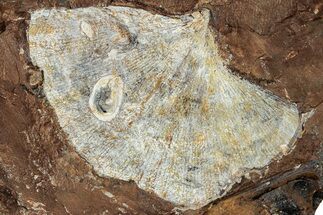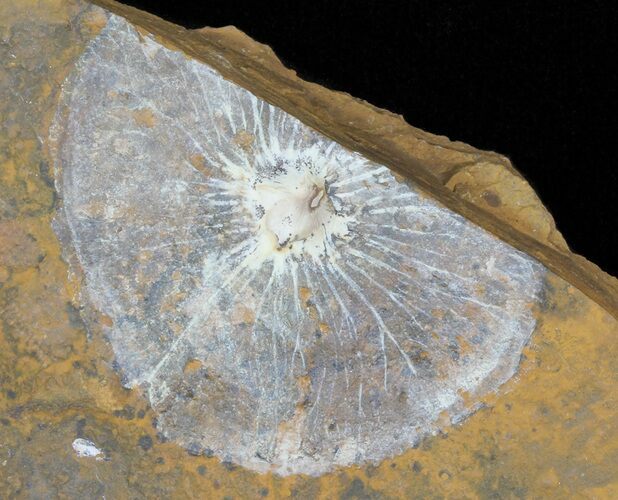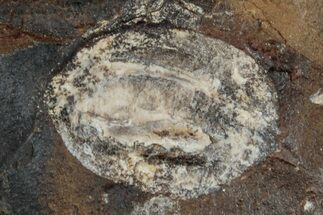This Specimen has been sold.
Fossil Juglandaceae (Winged Walnut) Fruit - North Dakota
This is a fossil fruit from the Juglandaceae (Walnut) family of the species Cyclocarya brownii. It is Late Paleocene in age or approximately 57 million years old.
The Juglandaceae (walnuts, hickories, pecans) has one of the best-documented fossil records in the Northern Hemisphere. The oldest modern genus, Cyclocarya, today restricted to China, first appears in the late Paleocene (57 ma) of North Dakota, USA. Unlike walnuts and pecans that produce edible fruits dispersed by mammals, Cyclocarya fruits are small nutlets surrounded by a prominent circular wing, and are thought to be wind- or water-dispersed. Because Cyclocarya fruits are winged, they might be assumed to be wind-disperse, but their radial symmetry does not have the aerodynamic qualities typical of wind-dispersed fruits, and may have been dispersed by water.
A paper describing these fruits in depth is linked below.
Cyclocarya brownii from the Paleocene of North Dakota, USA
The Juglandaceae (walnuts, hickories, pecans) has one of the best-documented fossil records in the Northern Hemisphere. The oldest modern genus, Cyclocarya, today restricted to China, first appears in the late Paleocene (57 ma) of North Dakota, USA. Unlike walnuts and pecans that produce edible fruits dispersed by mammals, Cyclocarya fruits are small nutlets surrounded by a prominent circular wing, and are thought to be wind- or water-dispersed. Because Cyclocarya fruits are winged, they might be assumed to be wind-disperse, but their radial symmetry does not have the aerodynamic qualities typical of wind-dispersed fruits, and may have been dispersed by water.
A paper describing these fruits in depth is linked below.
Cyclocarya brownii from the Paleocene of North Dakota, USA
SPECIES
Cyclocarya brownii
LOCATION
Morton County, North Dakota
FORMATION
Sentinel Butte Formation
SIZE
1.4" long on 2.9x1.9" matrix
CATEGORY
ITEM
#65812
We guarantee the authenticity of all of our
specimens. Read more about our
Authenticity Guarantee.
specimens. Read more about our
Authenticity Guarantee.
 Reviews
Reviews












